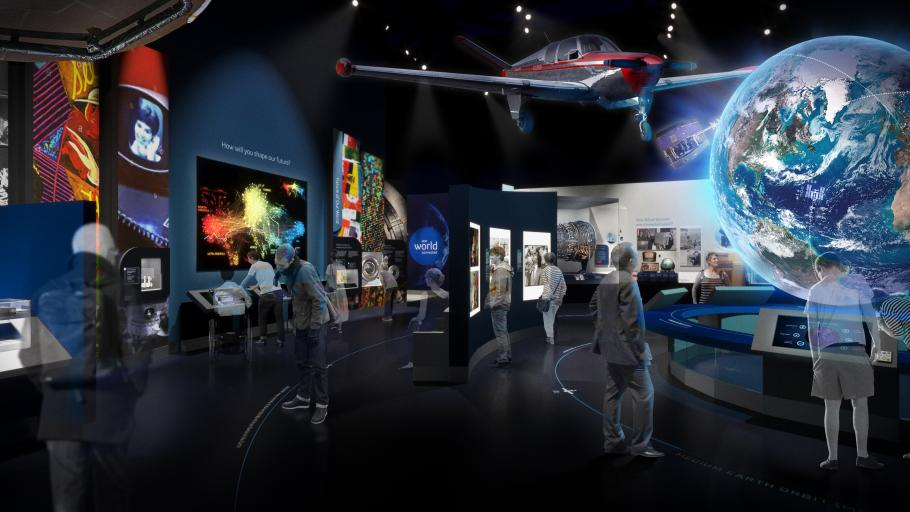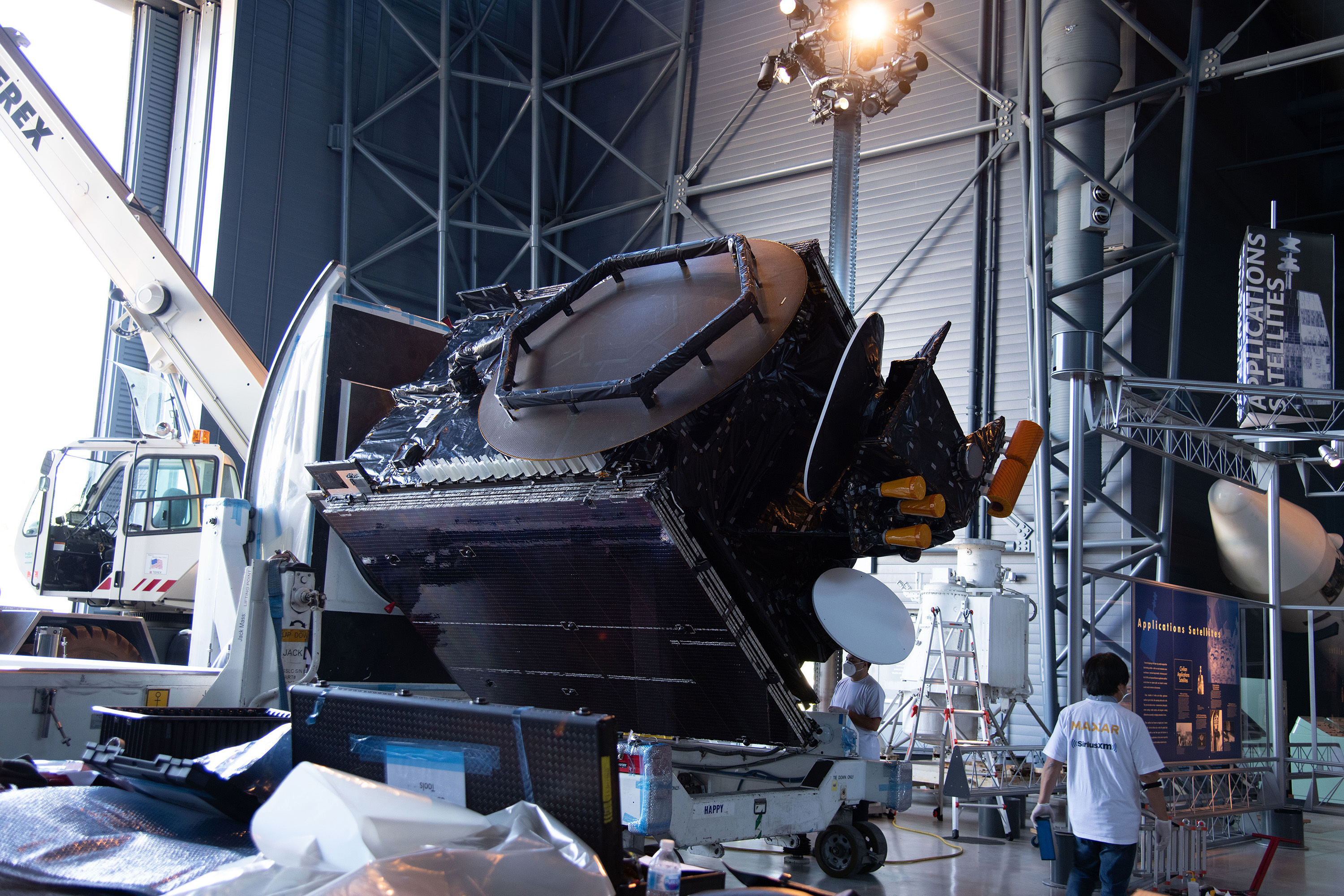
Artist rendering of One World Connected exhibition. Image courtesy Smithsonian’s National Air and Space Museum.
The Smithsonian’s National Air and Space Museum on the National Mall in Washington, D.C., is undergoing a multiyear renovation, transforming all 23 galleries and presentation spaces. The reimagined museum will update and modernize its exhibits to continue inspiring 21st century audiences. As part of these renovations, the exhibits will include satellite imagery, spacecraft and a robotic arm contributed by Maxar.
One World Connected
The Maxar-built Sirius FM-4 spacecraft has been on display at the National Air and Space Museum’s Udvar-Hazy Center in Northern Virginia since 2012. In May 2021, it was moved to the museum’s building on the National Mall.

Sirius FM-4 used to be on display in the James S. McDonnell Space Hangar at the National Air and Space Museum’s Udvar-Hazy Center in Northern Virginia.

Maxar employees remove Sirius FM-4 from its exhibit at the Udvar-Hazy Center.

The logistics team wraps Sirius FM-4 in plastic to protect it from dust during its move.

Sirius FM-4 was attached to a dolly for its move downtown. The satellite will stay in its plastic wrapping while the exhibit around it is completed to protect it from construction dust.

The satellite was encapsulated in a special container built specifically for transferring satellites. A semitruck hauled the container to the museum downtown.
Flip through these images to see how Sirius FM-4 was moved between the Smithsonian’s buildings. Images courtesy Smithsonian’s National Air and Space Museum.
Sirius FM-4, a 1300-class spacecraft built by Maxar for SiriusXM as a flight-ready backup that never launched, will become part of the museum’s new One World Connected gallery, which is scheduled to open in late 2022. One World Connected will tell the story of how flight fostered two momentous changes in everyday life: the ease in making connections across vast distances and a new perspective of Earth as humanity's home. In addition to Sirius FM-4’s example of connection through satellite-based communications, Maxar is also contributing our industry-leading satellite imagery to this gallery as part of a “Seeing Earth in New Ways” interactive display. Visitors to the museum will be able to explore some of the different technologies used in looking at the planet from space.
Future exhibitions in the transformed museum
The museum is also working on transforming the east end galleries, which will open in the mid-2020s. Visitors will be able to view Maxar’s Space Infrastructure Dexterous Robot (SPIDER) ground demonstration robotic arm. SPIDER is a robotic arm that will demonstrate groundbreaking and fundamental technologies for on-orbit assembly and reconfiguration. This revolutionary process could allow satellites, telescopes and other systems to use larger and more powerful components that might not fit into a standard rocket fairing when fully assembled. SPIDER will launch on the On-Orbit Servicing, Assembly and Manufacturing (OSAM-1) spacecraft, which will also refuel a government satellite that was not designed to be serviced. Maxar is building the 1300-class bus and three robotic arms, including SPIDER, for NASA’s OSAM-1 program.
This video illustrates SPIDER’s on-orbit mission.
In another east end gallery opening later this decade, Maxar’s high-resolution satellite imagery will be used throughout the gallery on display screens and as flooring so people can feel immersed in the scenes. The displays will show a variety of current events for which satellite imagery provided key geospatial intelligence or context for decision-makers
Maxar is honored to be featured in the updated galleries as a part of America’s space legacy and looks forward to seeing the updated galleries as the museum completes its major renovation project.